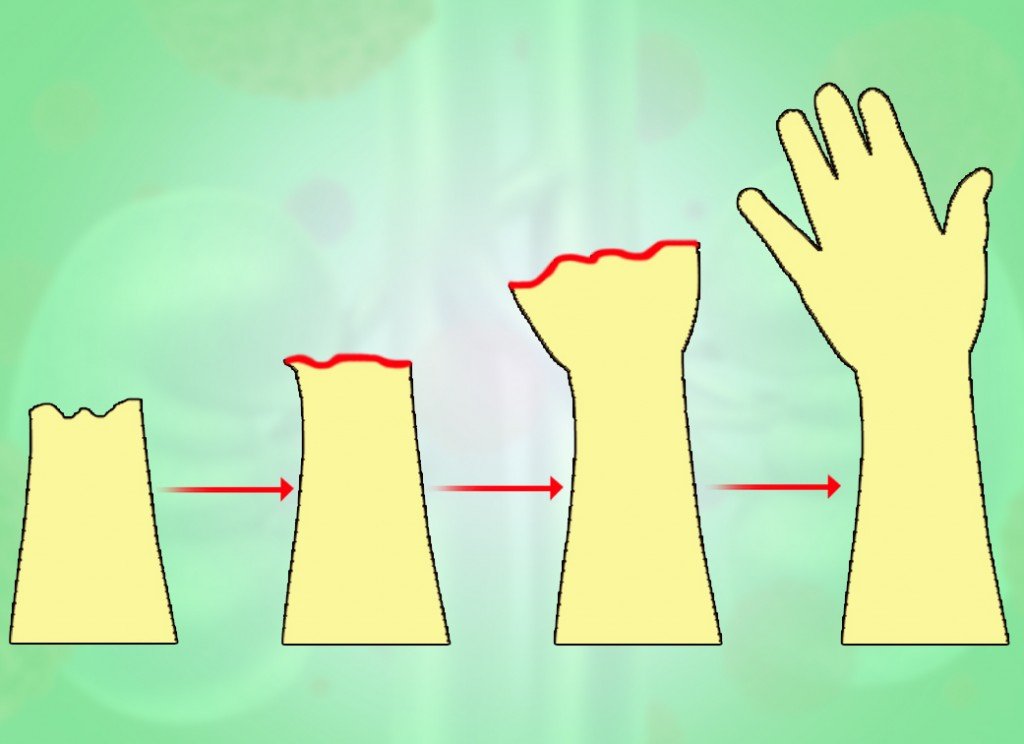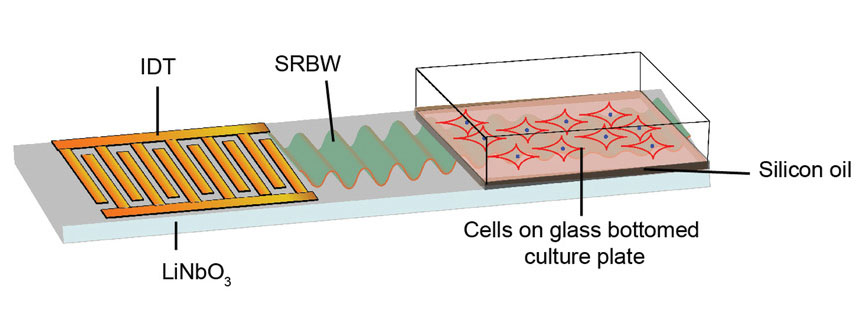If humans want to equip themselves with the ability to regenerate their bodies, in the same way that lizards regrow their tails, we will certainly have to find a way to regenerate our broken bones. In one such effort, scientists were able to use sound waves to turn stem cells into bone cells in as little as five days.
Stem cells are cells with superpowers that can turn into any other cell in the body. These are the same cells that some animals use to regrow their lost limbs.
For human medicine, being able to turn stem cells into bone cells will help us repair body parts damaged by injury or disease. In the short term, doctors say it could help cancer patients who unfortunately have to have their bones removed, or some other degenerative bone disease.

The new study was carried out by scientists from the Royal Melbourne Institute of Technology (RMIT). In it, they used sound waves to act on mesenchymal stem cells.
These mesenchymal stem cells can be obtained directly from the patient’s fat. That means the path to bone regeneration with the new technique is much simpler than that of previously developed techniques.
It’s not that scientists haven’t figured out how to turn stem cells into bone cells. But the techniques they use are often complex and difficult to put into practice. One technique, for example, requires a needle to be inserted into the bone marrow to obtain marrow stem cells from a patient. This is an invasive, painful technique that must be performed under anesthesia.
The amount of marrow stem cells collected is also very small, making the scale of regeneration of this method not high. In addition, after injecting marrow stem cells into the bone that needs to be regenerated, they also need to be injected with more chemicals to turn from stem cells into bone cells.
Now, the RMIT researchers have taken a new approach. They used sound waves instead of the chemical, and collected mesenchymal stem cells from fat, an approach that is less painful and gives a larger stem cell yield.
After the mesenchymal stem cells are collected, they are irradiated with a 10 MHz sound wave signal. Only after 5 days, 10 minutes of sound waves every day, these cells have begun to differentiate into bone cells.

Device for differentiation of mesenchymal stem cells into osteoblasts: It has a mass wave reflective surface (SRBW) made of a single crystal piezoelectric substrate (LiNbO3). When an electric current is passed, the device can generate sound waves at a resonant frequency (10 MHz). This wave runs through a thin layer of silicone oil, applied to a glass-bottomed culture dish containing human mesenchymal stem cells. The whole process effectively differentiated stem cells into bone cells.
“Sound waves cut up to several days of treatment time needed for stem cells to turn into bone cells“, said Amy Gelmi, Vice Chancellor at RMIT and member of the research team.The method also doesn’t require any special ‘bone-stimulating’ drugs and is very easy to apply to stem cells.”
Post-stimulation tissues can be injected directly into the site of injury or at the site of bone damage due to disease. Here, they will continue their differentiation process and heal the patient’s wounds, restoring their bones.
Leslie Yeo, a chemical engineer on the RMIT team, adds that another advantage of this approach lies in the cost aspect. “Our equipment is cheap and easy to use. So we can easily upgrade them and treat large numbers of cells at once. This is crucial for a tissue engineering therapy to become a reality. effective”I said.
Tissue Engineering that Yeo refers to is an emerging field of science that sits at the intersection of many fields including biomedical engineering, cell therapy, materials methods, factors chemistry and biophysics such as the use of sound waves in this study for the purpose of improving, maintaining, or restoring damaged biological tissues in the body.
One particular area where tissue engineering is targeted here is regenerative medicine, which involves the assembly and culture of cells on scaffolds, which are scaffolds made of biomaterials that dissolve after tissue adheres to them. , helping to restore the damage or defect on the patient’s body.
The method has already been used to create in vitro meat, biological livers, artificial pancreases for transplantation for diabetics, artificial cartilage and blood vessels, artificial skin and bone marrow, mucosal tissues and organs. even an artificial penis…
The stained microscope image shows stem cells that are differentiating into bone cells (red) and producing collagen (blue).
Now, with this new study, RMIT scientists have taken tissue engineering one step further to create bone tissues that are not only replaceable, but can also help patients recover. his lost bones.
As a next step in this research, they plan to upgrade their device into a bioreactor capable of mass-producing bone cells grown from fat-collected mesenchymal stem cells.
“Our study shows that this new method has great potential for application in stem cell treatment. We can coat these cells on an implant or inject them directly into the patient’s body to create new bone tissue for them.“, said Gelmi.
Refer to Sciencealert
